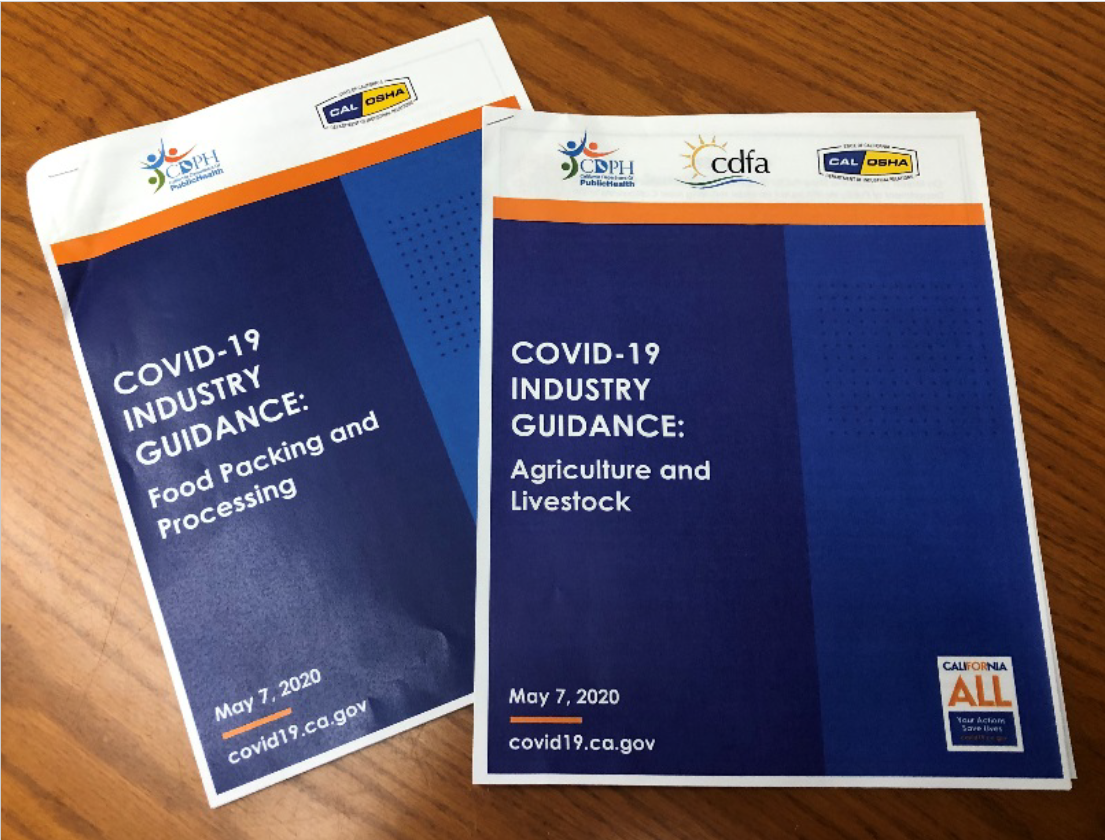
This year’s almond, pistachio and walnut harvests may look a little different than they have in the past.
While stakes are high every year for bringing in a high yielding harvest and delivering a quality crop to the processor, adding COVID-19 and Centers for Disease Control and Prevention guidelines to the mix will change some priorities and make efficiency much more critical than it has in years past.
Protecting employees, health screening and heightened sanitation measures will be paramount in fields and processing facilities, said Roger Isom, president of Western Association of Ag Processors (See Isom’s related article in this issue of West Coast Nut.)
Keeping a Safe Distance
Spreading out harvest equipment in the orchard will be easy compared to making sure employees in processing are adhering to Covid-19 safety requirements. Isom said that workers will undergo a health check upon arrival and will have to be provided protective gear. There will also be extra training involved to make sure the plant is in compliance. Sanitation measures will be stepped up, and commonly touched equipment will have to be sanitized between uses.
Sorting line crews may have to be spread out, slowing the process, Isom warned. Little things like fans to keep air moving when temperatures rise will be problematic as they could increase the risk of spreading the virus through the air.
There is also the question of being able to hire enough workers. Isom said there are instances where workers have traveled to Mexico and now are not able to return. If schools remain closed, parents without childcare alternatives will have to stay at home.
Zack Raven, farm manager at Keenan Farms Inc. of Kettleman City, said protection protocols for employees as well as their pistachio products were adopted early in the pandemic.
“We have already been abiding by CDC rules, distance between employees, sanitizing things, breaks between shifts. We are doing what we need to do to keep everyone here safe,” Raven said. Following those protocols does take time, he said, but it hasn’t had a big effect on their plant efficiency.
Keenan Farms has also implemented health screening for employees prior to their shift. Temperatures will be taken to make sure they are not coming to work ill. Masks are being provided.
Raven said he expects to implement the same protection protocols with the harvest crews later this summer. Anticipating continuing protective measures through the 2020 harvest, he said Keenan Farms will be using posters to remind workers to wash hands frequently, distance themselves and to minimize any contact with the crop which are all practices already in place with Good Agricultural Practices guidelines.
The last of Carriere Farms’ 2019 walnut harvest is being processed under the recommended safety guidelines and Bill Carriere said he expects to continue following those guidelines with the 2020 harvest.
Doubling Down on Sanitation
Carriere said the Glenn, California walnut processing plant has doubled down on sanitation and hygiene in the processing plant. Break rooms and lunchrooms for employees have been configured to help with social distancing. He said he does not anticipate any issues but already has a protocol in place to segregate one part of the plant if an employee tests positive for the virus.
“If we would have to shut down the in-shell side, we can still run the sheller,” he said.
On the harvest and hulling side, Carriere said workers do not generally work in close proximity, but they will be asked to maintain distance and to adhere to sanitation requirements. Employees sharing tools or equipment will be advised to sanitize them after use.
“There will be lots of training,” he added.
Mike Kelley, president and CEO of Central California Almond Growers Association, said the prevention plans supplied by WAPA would be followed at the Kerman area hulling plant.
In preparation for the upcoming harvest, he said employee restrooms and office areas have undergone remodels to maintain distancing and protect employees. Good Management Practices have been in place at the plant, he said, and the current situation with COVID-19 has given them an opportunity to re-engage and make sure the practices are followed. Employees will be required to wear masks on the property and to practice social distancing. Persons who need to enter the main offices will have to have their temperature taken and fill out paperwork confirming their health status.
Harvest crews should have no trouble maintaining social distance requirements, Kelley said, but if farm labor contractors are used, they must mandate that the required procedures to maintain worker safety be followed.
Sanitizing harvest equipment driver cabs between drivers will be necessary, as will sanitizing any tools used by more than one person each day.
The rules are in place to protect workers, Kelley said, and they are not too onerous.
Cal/OSHA has issued new guidance on workplace safety to protect against the spread of COVID-19. The checklists are for agriculture and livestock and food packing and processing.
The update mandates a written worksite specific plan for operations to protect workers.
WAPA has developed a template plan that includes information that is required in the written plan, training topics, individual control measures, cleaning and disinfecting protocols, physical distancing guidelines and inspection checklists. The Cal/OSHA guidance documents can be found at www.agprocessors.org COVID-19 Resources















